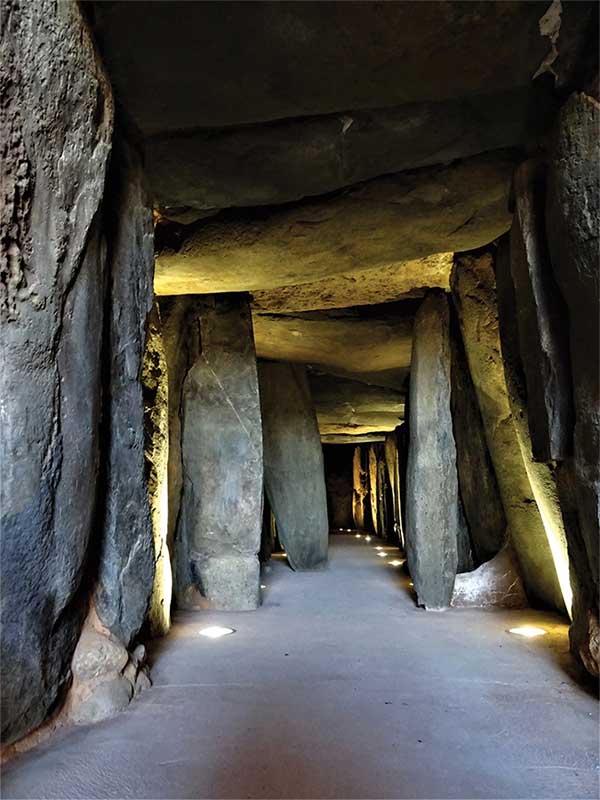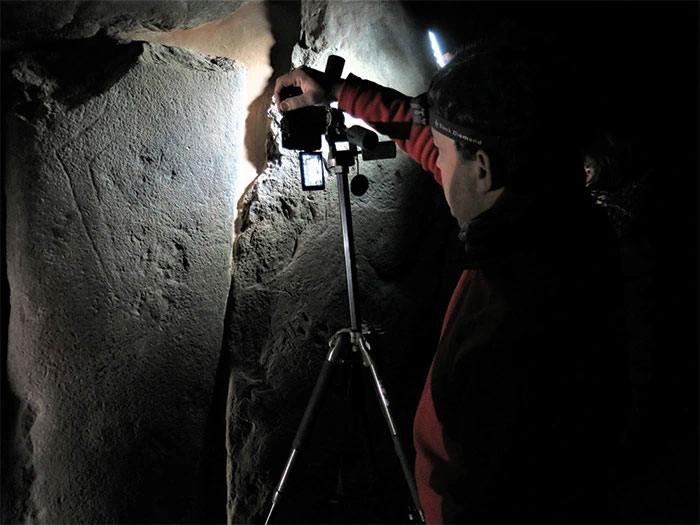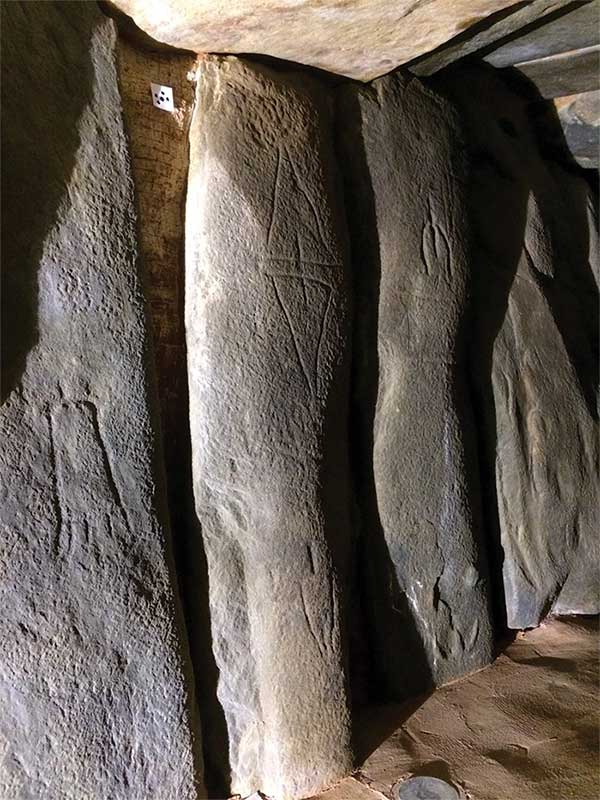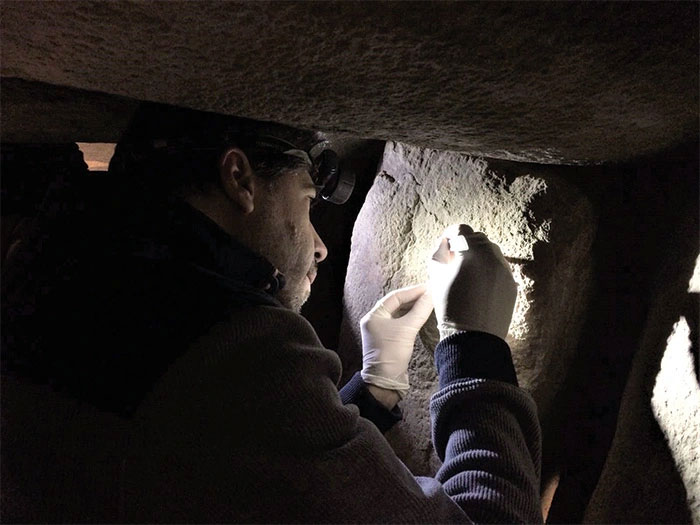Dolmen de Soto, an underground architectural marvel nestled in Trigueros, Andalusia, Spain, is often referred to as the “Underground Stonehenge.” Constructed between 4,500 and 5,000 years ago, this megalithic site stands as one among approximately 200 burial locations from Huelva’s ancient past.

Comprising a circular earth mound with an elongated passage leading to a chamber, this stone tomb houses eight human skeletons alongside various artifacts—cups, bowls, plates, knives, and marine fossils. Yet, what truly distinguishes this tomb is the presence of engravings and paintings adorning some upright stones along the passage and within the chamber. These depictions portray humans, vessels, tools, and geometric forms, shedding light on the beliefs and customs of those who constructed and used this burial site.

The origins of these Neolithic burial structures in Europe remain shrouded in mystery. However, the revolution of the Neolithic era commenced around 10,000 years ago in the contemporary Middle East, with the development and spread of burial architecture across Europe remaining relatively unclear.

By the 5th and 4th millennia BCE, passage graves became more prevalent, likely evolving from earlier tomb styles in Eastern Europe. The emergence of such megalithic tombs possibly began in the Iberian Peninsula before spreading northward into the Atlantic facade of Europe. Discovered in 1923 by Armando de Soto Morillas, Dolmen de Soto came to light when he intended to build a new house on his property. Recognizing the ancient site, he contacted the German archaeologist Hugo Obermaier, who excavated and documented the dolmens from 1924 to 1926.

While Andalusia hosts about 1,650 Neolithic burial sites (with approximately 210 in the province of Huelva), Dolmen de Soto stands out uniquely, separate from and distinctive among other concentrated architectural styles. Outwardly, these tombs commonly exhibit a circular earth mound with an east-west orientation leading to an underground corridor. This passage, known as the entrance, often connects to the designated burial chamber.

Within Dolmen de Soto, the passage and chamber form a continuous, gradually expanding exhibition room. The stone columns inside the corridor and chamber bear megalithic art, often accompanied by schematic imagery. This artistic creation might have occurred during construction or more likely during the utilization of the tomb. In recent years, a collective team of researchers from Portugal, Spain, and England undertook comprehensive research into the carved and painted stones within the dolmen. They employed various techniques, including Raman spectroscopy, to record and analyze images that were previously overlooked by most scholars.
Over 60% of the standing stones within the tomb exhibit engravings and traces of pigment, illuminated through imaging techniques. These images encompass diverse patterns—circles, daggers, human figures, vessels, geometric shapes, and circular motifs—providing profound insights into the societal changes of the Neolithic era, particularly concerning the introduction and use of copper and bronze weapons. The research team discovered that some engravings were fashioned by repurposing an existing menhir (a large standing stone), while others were created during or after the construction of the tombs. They also found that some paintings were made using red ochre, a prevalent prehistoric pigment.
Researchers speculate that these images might have served different meanings and functions based on their position, orientation, and display capability within the tomb. The presence of red pigment applied to engravings suggests a deliberate action to enhance the visibility of specific patterns. The research team is currently striving to determine whether this action aimed solely at visual enhancement or if the pigment added efficacy to the engravings.
Dolmen de Soto welcomes curious visitors eager to experience this remarkable historical site. Situated in the western part of the earth mound, a reconstructed entrance gate provides access inside. The passage stretches approximately 21 meters, expanding from 0.8 meters at the entrance to 3.1 meters at the central section. The chamber stands about 3.9 meters high and is circular. The passage and chamber are covered by 20 pyramid-shaped stones, forming the roof of the stone tomb.





